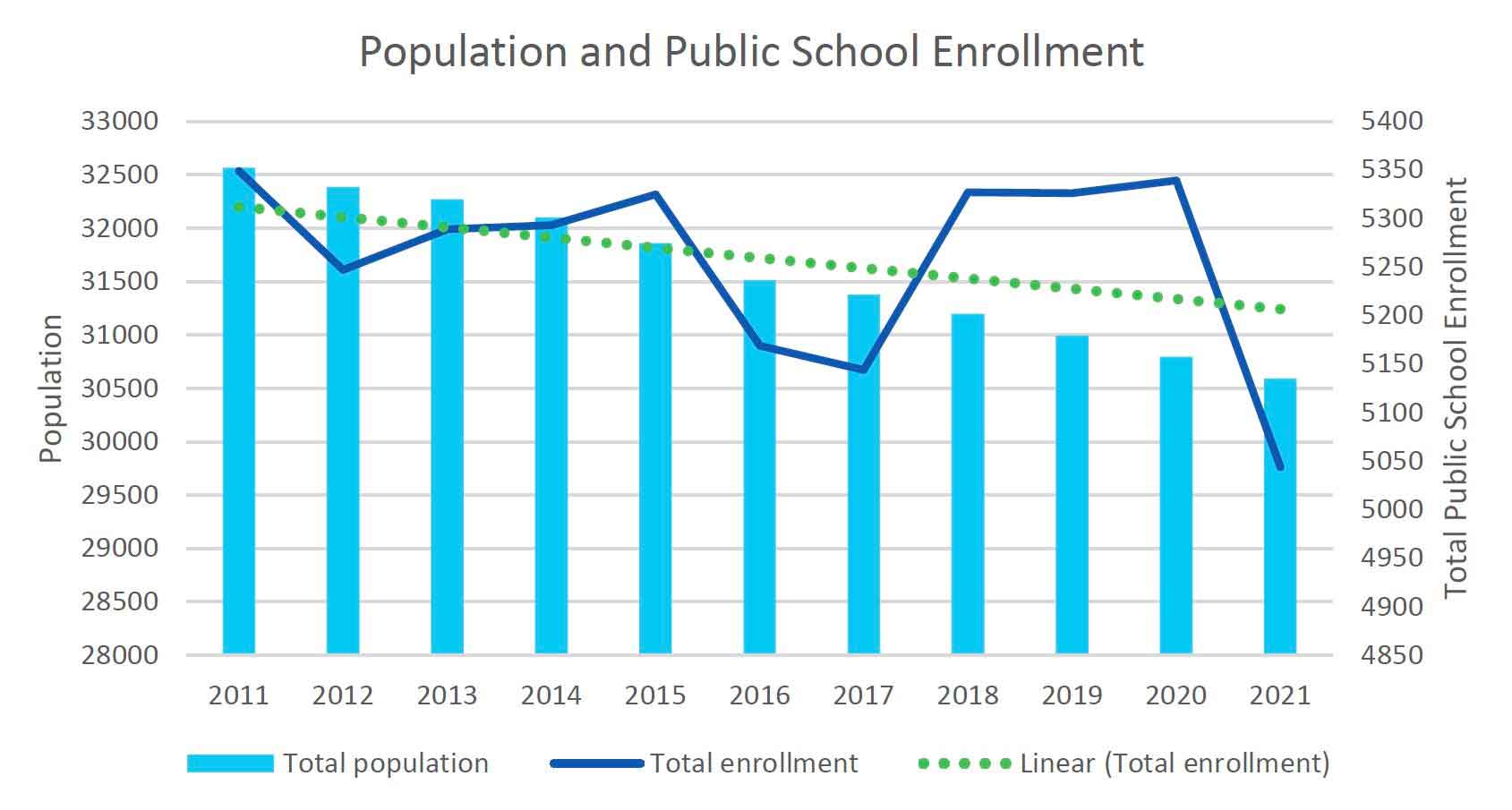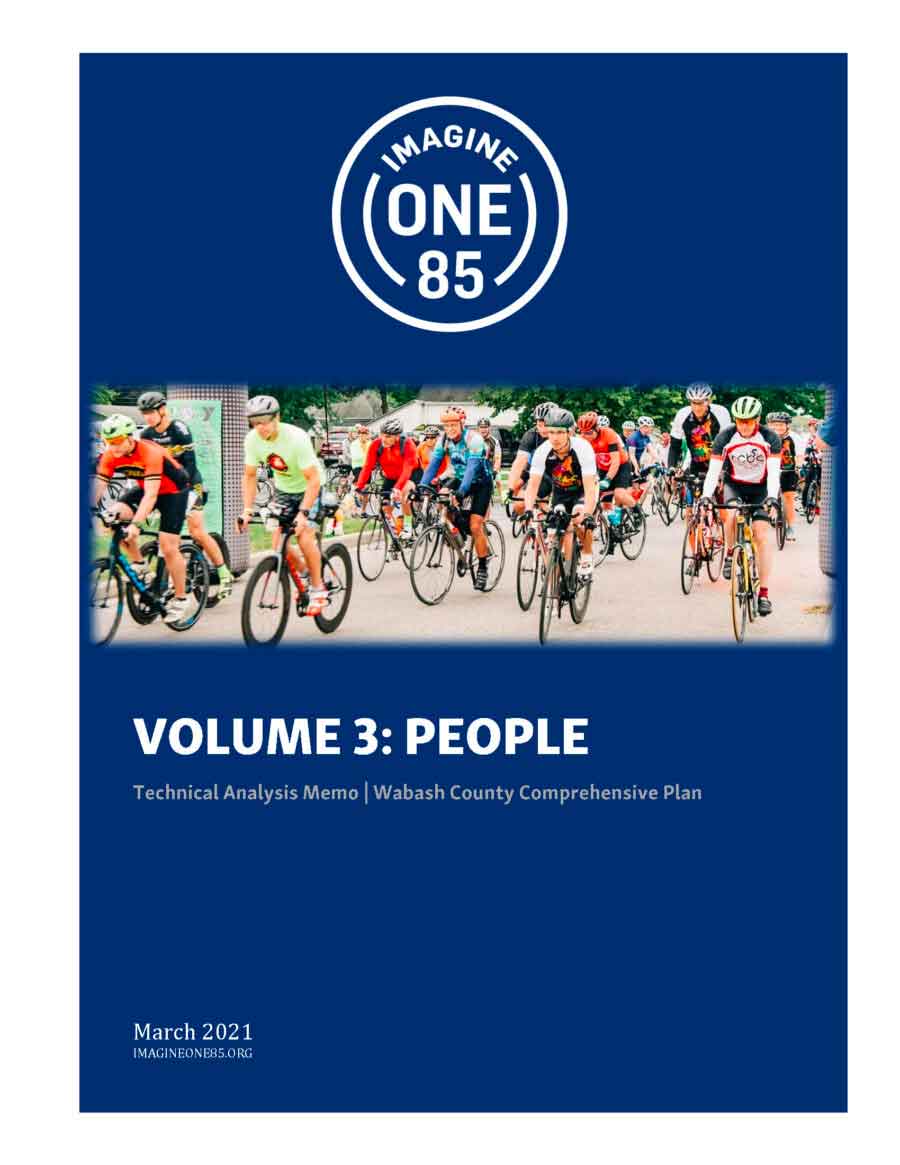People
The People Memo provides analysis across three topics: public health, placemaking, and education.
Key Findings
- Health Factors in Wabash are better than nearly two-thirds of other counties in Indiana. Areas of strength include Income Equality, Social Associations, Insurance Coverage, Mental Health Providers, and Vaccinations. Opportunity areas include Adult Smoking and Obesity, Post-Secondary Education, and Air Pollution.
- Residents have access to opportunities for active and healthy lifestyles. Investments made in trails and blueways, particularly on the Wabash River Trail, promote an active lifestyle and provide recreation opportunities for residents. Healthy food access is provided through several Farmer’s Markets and a variety of grocery stores that offer fresh produce.
- Placemaking efforts support other community priorities. The Wabash River Trail, Downtown Wabash Farmers Market, and other examples promote values such as public health and economic development.
- Overall enrollment in schools has been declining and will continue as the County demographic changes. The aging population and only a modest rate of in-migration of families with school-aged children contribute to this trend.
People
Public Health
The Public Health chapter reviews the state of public health in Wabash County and its connection to economic resiliency. First, health factors and outcomes are measured against the state and comparable counties. Then, an inventory and map of the health care facilities across the County are presented to understand their distribution and to identify potential for growth. This section also details environmental impacts on public health, recognizing several key components particularly relevant to Wabash. The final section presents existing public health programs in the County alongside model programs as examples for further exploration.
Key Findings
- Health Factors in Wabash are better than nearly two-thirds of other counties in Indiana. Areas of strength include Income Equality, Social Associations, Insurance Coverage, Mental Health Providers, and Vaccinations. Opportunity areas include Adult Smoking and Obesity, Post-Secondary Education, and Air Pollution.
- County Health Outcomes are relatively low with respect to the state and comparable counties. Premature death rates are increasing. Cancer, heart disease, accidents, chronic lower respiratory diseases, and diabetes mellitus contribute to this finding.
- Residents have access to opportunities for active and healthy lifestyles. Investments made in trails and blueways, particularly on the Wabash River Trail, promote an active lifestyle and provide recreation opportunities for residents. Healthy food access is provided through several Farmer’s Markets and a variety of grocery stores that offer fresh produce.
- 6.7% of County residents do not have health insurance, and 20% of residents are age 65 and older. By these measures, more than 25% of residents are especially vulnerable to significant health issues.
- Health care facilities are clustered in the cities of Wabash and North Manchester, and they offer most services. The county is home to a Critical Access Hospital, Primary Care Physicians, a mental health clinic, and a variety of specialists. The nearest Level II Trauma Center is located in Fort Wayne.

Placemaking
The Placemaking section describes the quality of place characteristics in Wabash County. Next, it explains the connections between placemaking and other topic areas. Finally, this section describes recent placemaking efforts, identifies key assets in the county that contribute to its quality of place, and explores opportunities for future placemaking.
Key Findings
- Wabash County has taken significant steps in placemaking to accentuate its natural and manmade assets. The Stellar Communities Grant has enabled a number of valuable projects that improve the County’s quality of place. Visit Wabash County has also promoted the various communities through improved signage.
- Placemaking efforts support other community priorities. The Wabash River Trail, Downtown Wabash Farmers Market, and other examples promote values such as public health and economic development.
- The COVID-19 Pandemic has highlighted the value of existing outdoor amenities and revealed a demand for more outdoor dining and gathering spaces.

Education
This section reviews the educational system within Wabash County. First, educational opportunities ranging from pre-K to post-secondary / vocational are identified and mapped. Further consideration is then given to understand trends in the County and to identify comparative measurements to use as benchmarks for the education system. Finally, this section provides a summary of the findings from the 2017 Studies for Advancement.
Key Findings
- Wabash County is home to a complete continuum of learning opportunities. Residents have options that range from pre-k and early childhood to post-secondary and alternative, technical, and vocational training. The presence of Manchester University in the County is a significant higher education opportunity for a county of its size.
- Overall enrollment in schools has been declining and will continue as the County demographic changes. The aging population and only a modest rate of in-migration of families with school-aged children contributes to this trend.
- Current academic programs meet State requirements, but lower limits specialized or advanced learning opportunities and certain extracurricular activities. Class offerings like world languages, engineering, and business, and extracurriculars such as soccer teams and marching bands are unavailable.
- Availability and affordability of childcare affects parents’ participation in the workforce. Limited access to childcare in Wabash presents significant economic challenges, including millions of dollars in lost wages and earnings.


.png)
